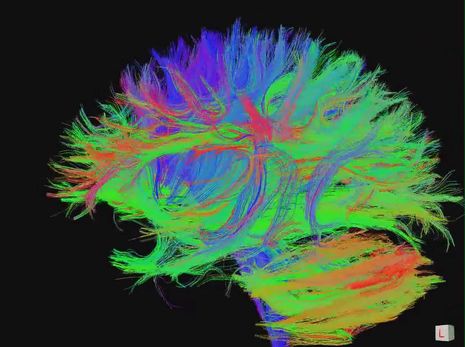Research Round-up: week two
The latest scientific research, explained by Lucie Debaig

Type 1 diabetes reversed using stem cells
Scientists collaborating across multiple institutions in China have successfully transplanted insulin-producing cells into the abdomen of a type 1 diabetes patient. The patient, who has been living with these new cells for one year, no longer requires insulin injections in order to digest sugar. The patients’ own stem cells were extracted and reprogrammed to produce insulin before being implanted in the body: a technique which the authors hope will mitigate the risks of patients’ own immune systems rejecting these new cells. However, the patient is prescribed immunosuppressive drugs for a separate condition, so the rejection risk of this transplant cannot yet be properly evaluated.
Insulin is a hormone which is typically produced in the islet cells of the pancreas, from which it is released following a meal. Insulin acts on many cells of the body to make them take up newly digested sugar. This is important to both nourish the cells and maintain the correct concentration of sugar in the bloodstream, which affects blood pressure and brain function. In type 1 diabetes, patients’ immune systems attack and kill these islet cells, resulting in a lack of insulin and a high risk of excess blood sugar. This in turn can lead to a range of symptoms like nerve damage and diabetic ketoacidosis, which can lead to coma.
While further clinical trials and more extended monitoring of this patient are vital before this technique becomes widely applied, the possibility of a long-term treatment for diabetes is extraordinary. Over 400,000 people in the UK alone suffer from type 1 diabetes, and current treatments are unsatisfactory. Insulin injections are expensive and inconvenient, and injections of donor islet cells, while possible, are challenged by a lack of donors and the risk of the body’s own immune system rejecting the tissue. If this patient continues to perform well, she may be the first of millions worldwide to reclaim bodily control of her blood sugar.
"If this patient continues to perform well, she may be the first of millions worldwide to reclaim bodily control of her blood sugar. "
New software improves understanding of rapid genetic adaptation in bacteria
An American research team has published extensive research into DNA sequence inversion, a mechanism for bacteria to rapidly modify their genetics. This publication is accompanied by a software tool, PhaVa, which will improve scientists’ ability to identify locations in the genome where sequences have been inverted by taking advantage of more modern long-read sequencing technologies. While the software itself is most exciting as it will allow others to pick up many more avenues of research, the group demonstrated PhaVa’s power with a deep dive into how a DNA sequence inversion in one specific bacterium facilitates its ability to grow both inside and outside the human gut: an important factor in human health and evolution.
DNA sequence inversion occurs when proteins called invertases selectively splice, flip, and recombine a region of a DNA sequence. In sequences of DNA that contain the instructions for protein, this changes the structure of the protein generated. The authors focused on an example where the DNA sequence inversion introduces a premature stop codon in the gene. As a result, the protein produced is much shorter, and loses its function for producing vitamin B1. The authors found that strains of the bacterium ‘locked in’ to the forward sequence did not change their growth rates in response to a changing vitamin B1 concentration in the environment. However, strains ‘locked in’ to express the inverted sequence grew better than their non-inverted counterparts in media that mimicked vitamin B1 levels in the human gut.
This suggests that DNA sequence inversion may play an important role in allowing microbes to colonise the human gut. Unlike better-studied random loss-of-function mutations however, DNA sequence inversion is reversible and may happen more readily. This means it allows for faster adaptation than random mutations. However, if and how vitamin B1 concentrations control the invertase enzymes which drive DNA sequence inversion could not be ascertained in this study. Further research is needed to fully understand both this example and the broader applications of DNA sequence inversion in general.
The first complete fly connectome
Following more than four years of effort by 76 laboratories, 287 researchers, and many more volunteers all around the world, including the University of Cambridge and Cambridge’s MRC Laboratory of Molecular Biology, a complete annotated wiring diagram of a fly brain has been completed. This monumental achievement in biological imaging, AI based computing, and sheer human effort will open avenues for understanding exactly how electrical activity in the brain leads to animal behaviour.
"The scientists were also surprised by the sheer interconnectivity of the brain, with neurons previously attributed to visual function also receiving input from touch and hearing"
Among the extraordinary achievements of this project, 4,581 of the 8,453 types of neuron identified were newly discovered during this research, each of these offering many more questions for science to answer. The scientists were also surprised by the sheer interconnectivity of the brain, with neurons previously attributed to visual function also receiving input from touch and hearing, among other examples. In all, the diagram includes 54.5 million synapses (connections between neurons).
One simulation which has already been run on this model involved activating simulated neurons which are already associated with pleasant or unpleasant tastes. These led to a signal cascade to the proboscis, the fly equivalent of a tongue. The resultant neural signals reliably corresponded to unfurling of the proboscis in response to pleasant tastes, and inhibition of this pathway given an unpleasant taste. Comparing this simulation to behavioural tests in actual flies, the researchers reported 90% accuracy in predicting fly behaviour based on this model. Other simulations on pathways for walking further validated the model.
Remaining limitations of the model include that it only simulates chemical communication between cells, ignoring more direct intercellular electrical connections. Furthermore, this entire model is based on just one brain: even among fruit flies, individual discrepancies are expected, and sex-based differences will certainly be interesting to note: this connectome is of the female brain, so cannot be used to investigate male-specific fly behaviours like singing.
 Interviews / You don’t need to peak at Cambridge, says Robin Harding31 December 2025
Interviews / You don’t need to peak at Cambridge, says Robin Harding31 December 2025 News / Unions protest handling of redundancies at Epidemiology Unit30 December 2025
News / Unions protest handling of redundancies at Epidemiology Unit30 December 2025 Comment / What happened to men at Cambridge?31 December 2025
Comment / What happened to men at Cambridge?31 December 2025 Features / ‘Treated like we’re incompetent’: ents officers on college micromanagement30 December 2025
Features / ‘Treated like we’re incompetent’: ents officers on college micromanagement30 December 2025 Theatre / We should be filming ADC productions31 December 2025
Theatre / We should be filming ADC productions31 December 2025








